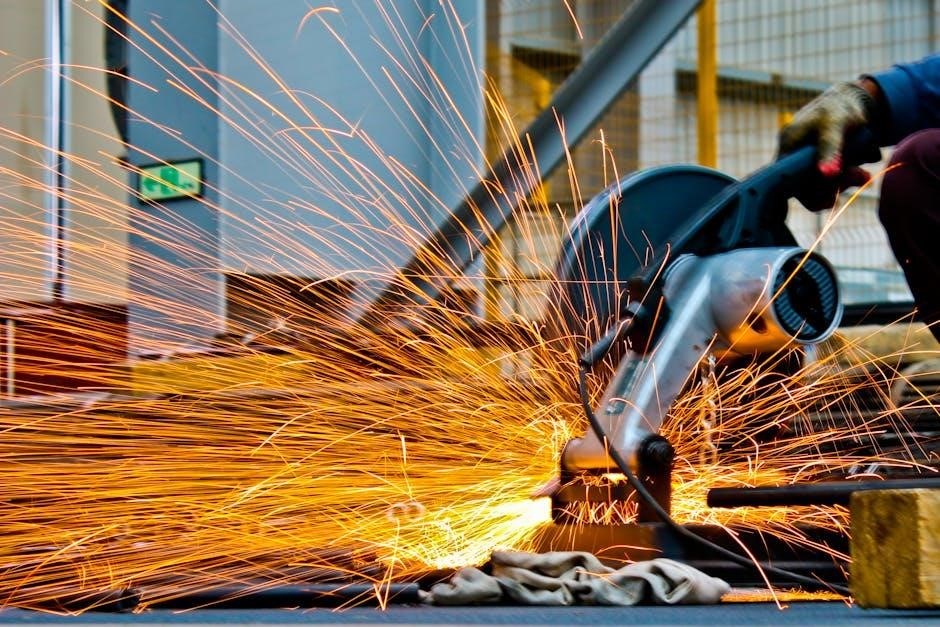The Singer Featherweight manual provides essential information and guidelines for operating and maintaining the machine‚ including safety precautions and troubleshooting tips for optimal performance always.
Overview of the Singer Featherweight Sewing Machine
The Singer Featherweight sewing machine is a portable and versatile machine that has been popular among quilters and sewers for its perfect straight stitch and ease of maintenance. With its lightweight design and compact size‚ it is easy to take to classes or workshops. The machine is also known for its durability and reliability‚ making it a favorite among sewing enthusiasts. The Singer Featherweight sewing machine has a rich history‚ dating back to the 1930s‚ and has been produced in various locations‚ including the United States and Scotland. Its unique features and characteristics have made it a sought-after machine among collectors and sewers alike‚ with many resources available for maintenance‚ repair‚ and operation. Overall‚ the Singer Featherweight sewing machine is a highly regarded and beloved machine in the sewing community. Its popularity endures to this day.
Key Features of the Singer Featherweight
The Singer Featherweight has several key features that make it a popular choice among sewers. Its perfect straight stitch and ease of use are major advantages. The machine is also lightweight and portable‚ making it easy to transport. Additionally‚ the Singer Featherweight is easy to maintain and repair‚ with many resources available online. The machine’s compact size and durable construction make it a great choice for quilting and other sewing projects. Its versatility and reliability have made it a favorite among sewing enthusiasts. The Singer Featherweight’s features have been refined over the years to provide a smooth and efficient sewing experience. With its many benefits and advantages‚ the Singer Featherweight is a great choice for sewers of all levels. The machine’s features and capabilities make it an excellent value for its price. It is a highly sought-after machine.

History of the Singer Featherweight
The Singer Featherweight was produced between 1933 and 1957 in the United States and Scotland until the 1970s with great success always online.
Production Years and Locations
The Singer Featherweight sewing machines were produced in various locations‚ including the United States and Scotland‚ with production spanning several decades.
The production years for the Singer Featherweight were from 1933 to 1957 in the United States‚ and the production continued in Scotland until the 1970s.
The Singer Sewing Machine Company was responsible for the production of these machines‚ which were highly regarded for their quality and portability.
The production locations played a significant role in the development and distribution of the Singer Featherweight‚ with the United States being the primary market.
The Singer Featherweight was designed to be a portable and versatile sewing machine‚ making it an ideal choice for quilters and sewers.
The production years and locations are an important part of the history of the Singer Featherweight‚ and understanding this information can provide valuable insights into the development of these iconic machines.
Impact on the Sewing Industry
The Singer Featherweight had a significant impact on the sewing industry‚ particularly among quilters‚ due to its portability and ability to produce a perfect straight stitch.
The machine’s lightweight design and ease of use made it an ideal choice for sewers who needed a reliable and versatile machine.
The Singer Featherweight’s popularity led to an increase in quilting and sewing activities‚ as it made it possible for people to create high-quality projects with ease.
The machine’s impact on the industry can still be seen today‚ with many quilters and sewers continuing to use and collect the Singer Featherweight.
The Singer Featherweight’s influence on the sewing industry has been lasting‚ and its legacy continues to be felt among sewing enthusiasts.
The machine’s impact has also led to the development of new sewing techniques and projects‚ further solidifying its place in the industry.

Maintenance and Repair of the Singer Featherweight
Regular maintenance is necessary for optimal performance and longevity of the machine always properly.
Oiling Points for the 221 Model
The 221 model requires regular oiling to ensure smooth operation and prevent damage to the machine. According to the manual‚ one drop of oil should be applied at each designated point‚ as indicated by the arrows. It is also recommended to occasionally apply Singer lubricant at points A and D. This will help to keep the machine well-lubricated and running efficiently. The oiling points are located throughout the machine and should be checked regularly to ensure that they are properly lubricated. By following the recommended oiling schedule‚ users can help to extend the life of their machine and prevent costly repairs. The manual provides a detailed diagram of the oiling points‚ making it easy to identify and maintain the machine. Regular oiling is essential for optimal performance and longevity.
Top Threading of the 221 Model
The top threading of the 221 model is a crucial step in preparing the machine for use. The manual provides a step-by-step guide on how to properly thread the machine‚ ensuring that the thread is correctly seated and tensioned. This involves passing the thread through the take-up lever‚ tension discs‚ and finally‚ the needle. Proper threading is essential for achieving a smooth and even stitch. The manual also provides tips and tricks for troubleshooting common threading issues‚ such as tangled threads or incorrect tension. By following the recommended threading procedure‚ users can ensure that their machine is properly set up and ready for use. The top threading process is a simple yet important step in getting the most out of the 221 model‚ and the manual makes it easy to understand and follow.

Accessories and Parts for the Singer Featherweight
Various accessories and parts are available for the Singer Featherweight‚ including needles and threads‚ always.
Availability of Parts and Attachments
The Singer Featherweight has a wide range of parts and attachments available‚ making it easy to maintain and repair the machine. Many online retailers and vintage sewing machine shops offer a variety of parts‚ including needles‚ threads‚ and lubricants. Additionally‚ some companies specialize in manufacturing replacement parts for the Singer Featherweight‚ ensuring that owners can keep their machines in good working condition. The availability of these parts and attachments has contributed to the machine’s popularity among quilters and sewing enthusiasts. With the right parts and maintenance‚ the Singer Featherweight can continue to provide reliable service for many years. Overall‚ the availability of parts and attachments is an important factor in the machine’s enduring popularity and usefulness. The internet has made it easier to find and purchase these parts.
Featherweight Fever and Elusive Cabinets
Featherweight Fever refers to the enthusiasm and dedication of Singer Featherweight owners and collectors. One aspect of this phenomenon is the search for elusive cabinets and tables that were originally designed to accompany the machine. These cabinets are highly sought after by collectors and can be quite rare‚ making them difficult to find. The cabinets were designed to hold the machine and provide additional storage for sewing supplies. Many owners and collectors are willing to pay a premium for these cabinets‚ which has driven up their value over time. The elusive nature of these cabinets has become a fascinating aspect of the Singer Featherweight’s history and culture‚ with many owners sharing their stories and tips for finding them online. This has created a sense of community among Featherweight enthusiasts. The cabinets are a prized possession among collectors.

and Resources
Trusted sources provide valuable information and resources for Singer Featherweight owners and enthusiasts always online readily available now.
Trusted Sources for Information and Parts
There are several trusted sources for information and parts for the Singer Featherweight‚ including online forums and communities‚ specialty sewing stores‚ and vintage sewing machine dealers. These sources provide valuable resources for owners and enthusiasts‚ offering a wide range of parts‚ attachments‚ and accessories. Additionally‚ many online retailers specialize in Singer Featherweight parts and supplies‚ making it easy to find what you need. Some organizations‚ such as ISMACS‚ also offer a wealth of information and resources for vintage sewing machine enthusiasts. By consulting these trusted sources‚ you can find the information and parts you need to keep your Singer Featherweight in top working condition and ensure years of reliable service. These sources are essential for anyone looking to maintain or restore their machine.
Instruction Manual and Safety Precautions
The instruction manual for the Singer Featherweight provides important safety precautions and guidelines for operating the machine; It is essential to read and follow these instructions carefully to avoid accidents and ensure safe use. The manual outlines specific safety precautions‚ such as reducing the risk of electric shock and proper handling of the machine. By following these guidelines‚ users can minimize the risk of injury and maintain a safe working environment. The manual also provides troubleshooting tips and maintenance instructions to help users identify and resolve common issues. It is crucial to refer to the manual regularly to ensure proper use and maintenance of the Singer Featherweight. Proper use and maintenance can help extend the life of the machine and prevent unnecessary repairs. Regular review of the manual is highly recommended.


